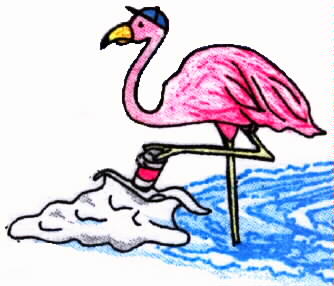
|
|
|
|
|
|
|
|
|
|
Lesson
Four
Clean
Sweep
|
 |
| Objective: To experience
how marine debris can affect a community and to discover that by taking
action people can make a difference.
Activity: As a class, students organize and conduct a cleanup of a local beach, lake, or stream. Students keep track of the types and amounts picked up and analyze this information in the classroom. As a class, students discuss the marine debris problem in their community and consider ways to prevent it. Vocabulary: Community, data, lifestyle, prevention, volunteer Materials: · One kitchen-sized garbage bag for each pair of students in the class (Note: If collected items will be separates for recycling, additional kitchen-sized garbage bags will be necessary,) · One pair of garden gloves for each student in the class. · One "Cleanup Card" handout for each
pair of students in the class
Subjects: Mathematics, Science, Social Studies Learning Skills: Analyzing, classifying, collecting data, decision-making, observing, working in small groups Duration: Two 40-minute periods Grade level: 4-12
|
Lesson Activities
1. Register for a cleanup 2. To prepare for the cleanup, explain the "Cleanup Card" handout to the students and demonstrate how to record the items they find. (Note: You may want to use this as an opportunity to show recycling in action. Have the students separate easily identifiable recyclable materials, such as bottles, cans, and newspapers, into bags for recycling.) Be sure to explain safety procedures to be observed while collecting debris, including wearing safety gloves and not handling sharp objects or items they don't recognize. 3. Once on site, have the students pair up. One student in the pair should carry the bag for trash (and a bag for recyclables, if they will be separating these), and actually gather the debris. As the first student collects the trash, both students should try to identify the item. The second student then records the information on the ""Cleanup Card". Ask students to record the sources of debris whenever possible. At the end of the cleanup, be sure that all the debris is properly disposed of. 4. Back in the classroom, have the students total the amounts of debris found for each category listed on the "Cleanup Card." They should also add all of these numbers and put the total number of items found in the space provided on the bottom of the card. (Note: you might write these numbers on the board to come up with a class total for each category, as well as a grand total for all of the pieces of debris found.) Discuss any trends found:
|